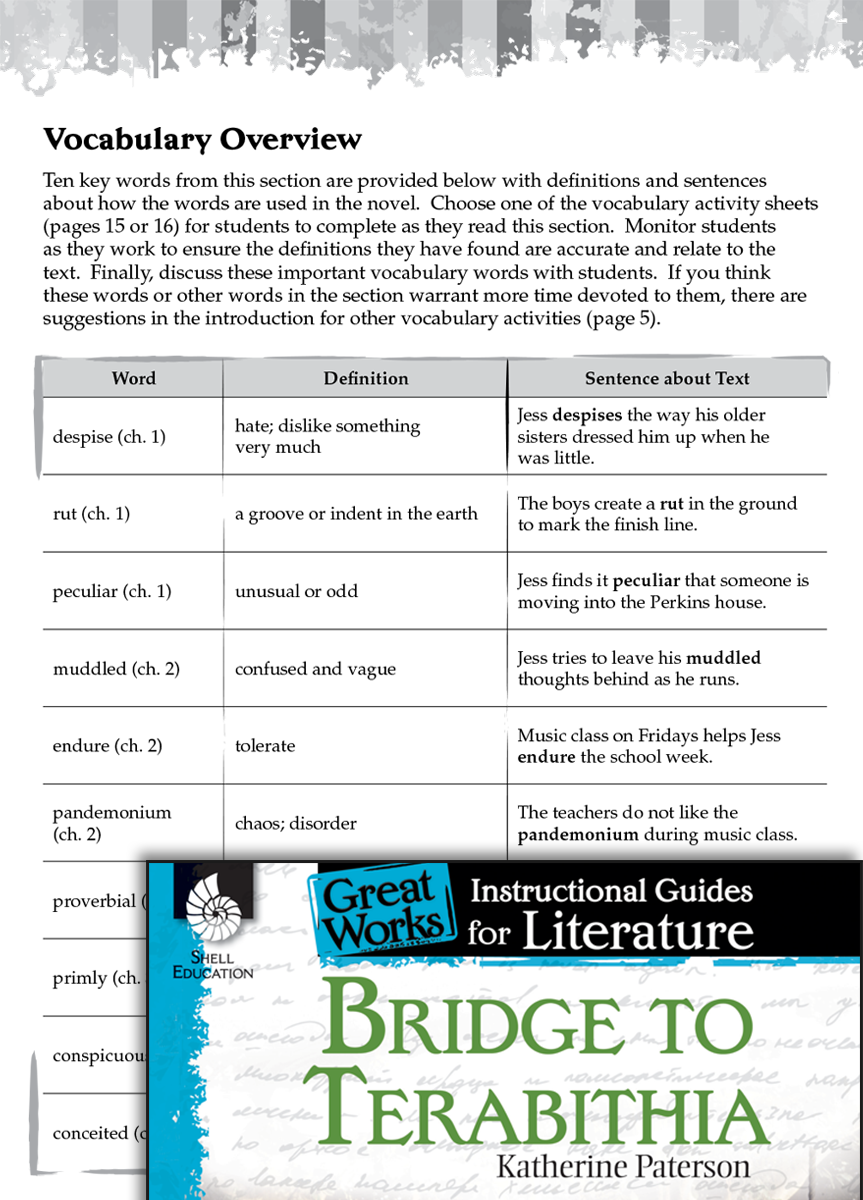



- #Building bridges vocabulary teacher document how to
- #Building bridges vocabulary teacher document download
Compression, or compressive force, is a force that acts to compress or shorten the thing it is acting on. Two major forces act on a bridge at any given time: compression and tension. To understand how bridges work, we must understand the forces that act on every bridge. Three basic types of bridges used in transportation are: beam and truss bridges, arch bridges and suspension bridges. (Show a map of Vancouver, BC, Canada, or another city with many bridges.) For example, the jutting features of Vancouver would be difficult to access if it were not for the bridges that tie this region together. Think about bridges as a way that engineers help us bring worlds together. Who designs these bridges? Civil engineers do. Bridges enable roadways to pass through varying terrain, over waterways and through mountains with minimal deviation, saving time in transport or commute or even connecting areas that would otherwise be inaccessible. What impacts do bridges have on our communities and cities? Bridges provide essential links between places, providing us with access to resources, other places and other people. (Optional: Provide each student with a copy of the Bridge Notes Worksheet to fill-in what they know about bridges before the activity and take notes on during the introduction portion of the activity.) Explain situations for which different types of bridges would be best suited.Describe and locate compressive and tensile forces acting on various types of bridges.Define three major types of bridges, including a beam or truss bridge, an arch bridge, and a suspension bridge.Teams of engineers decide on the bridge type, design and materials to best distribute the load across an obstacle, and draw detailed design plans, specifying materials, measurements, shapes and angles for construction of the bridge.Īfter this activity, students should be able to: To design bridges of any type, engineers must understand the forces that act on every bridge: compression and tension, and then design bridges to handle these forces without breaking or failing. Using the countless design possibilities of beam, truss, arch and suspension bridges, civil and structural engineers create the bridges that are essential to the infrastructure of our world.
#Building bridges vocabulary teacher document download
With an understanding of bridge sentences and the types of analogies, your students will be set up for success! Present them with leveled word analogies that will allow you to increase the difficulty as their skills and vocabularies improve.Ĭlick on the images below to download free sets of word analogies.Students model different bridge types such as a cable-stay bridge Once students understand the concept of a bridge sentence, begin teaching them the common types of analogy relationships. Students can then use “bridge sentences” to think through the word pairs that make up an analogy.
#Building bridges vocabulary teacher document how to
They should also be shown how to write them in reverse since the order of the word pairs can vary. Students should be given plenty of opportunities to create bridge sentences for various word pairs. I recommend beginning with analogies that are slightly below their instructional levels.īegin with explaining just what a word analogy is.Įxplicitly teaching students to use “bridge sentences” will allow them to determine the relationships between word pairs.

Just like with any new skill, carefully choose word analogies that are appropriate for your students. Word analogies can be a little tricky for students who are unfamiliar with them. build a network of understanding that improves retention and aids future learning.learn to decipher word meanings based on context.think critically and apply logical reasoning.recognize and understand multiple-meaning words.understand the relationships between ideas and words.When students from logical connections between words, they create a mental network of ideas-this deepens understanding and increases retention. Unlike vocabulary activities that require students to memorize word definitions, word analogies develop a deep understanding of words by exploring meaningful relationships. Word analogies are not only effective at building vocabulary, they also develop critical thinking skills. When it comes to vocabulary, word analogies are vocabulary gold! These “little” word puzzles present learning opportunities that go beyond other types of word work.


 0 kommentar(er)
0 kommentar(er)
